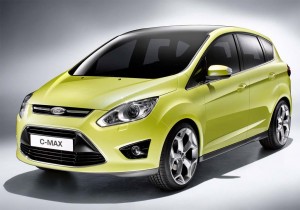Ford will announce this week three more versions of its high-mileage EcoBoost engine to its global line-up, with the maker planning to boost production of the powertrain to 1.5 million annually by 2013, half of them for sale in North America.
With the addition of the new EcoBoost offerings, the powertrain technology will be available on 11 different Ford models. Plans call for EcoBoost engines to be available on 80% of the Ford global line-up, and 90% of vehicles sold in North America.
“We are focused on sustainable technology solutions that can be used not for hundreds or thousands of cars, but for millions of cars, because that’s how Ford will truly make a difference,” said Ford’s vice president of powertrain engineering, Barb Samardzich.
EcoBoost borrows some of the same technologies that were developed for modern diesels, including direct injection, turbocharging and variable cam timing. That permits the engines to meet what had long been seen as conflicting goals: better performance, lower emissions and improved fuel economy.
Ford claims, for example, that the current V6 EcoBoost used in models such as the Lincoln MKS can deliver V8 performance and V6 mileage. However, mileage is sensitive to driver behavior and, as with any turbocharged engine, aggressive driving will have a significant impact on fuel economy.
The three new members of the EcoBoost line-up are:
- A 1.6-liter inline-four EcoBoost for use in the European version of the Ford C-Max people mover;
- A 2.0-liter EcoBoost that will be used in the next-generation Ford Erplorer and Edge models;
- A 3.5-liter V6 EcoBoost for the F-150 pickup. Ford claims the new version will maintain not only the power but the towing capacity of a V8.
Like its competitors, Ford is under significant pressure to meet stringent new U.S. fuel economy standards, which call for a fleet average 35.5 mpg by 2016. To get there will require more than just new powertrains, however.
The maker is targeting weight reduction of between 250 and 750 pounds per vehicle, according to Dan Kapp, Ford’s director of powertrain research and advanced engineering, which is expected to yield significant fuel economy improvements. Downsizing a vehicle’s engine size directly and immediately yields weight savings, but it also allows a maker to downsize other vehicle components, such as the engine cradle and brakes.
Meanwhile, Ford plans to address other aspects of the drivetrain, such as the transmission, where additional fuel economy gains of 5% or more can be achieved, according to industry experts. The maker’s 2011 Fiesta subcompact, for example, will use a new 6-speed electrically-shifted manual transmission, dubbed PowerShift, to eliminate some of the losses normally associated with an automatic gearbox.
By 2014, Ford also expects 20% of its global products to feature stop/start technology, the maker will announce. This permits the engine to automatically shut off rather than idle. When a motorist lifts off the brake, the engine automatically restarts. The technology is expected to yield about 5% savings in fuel consumption.

